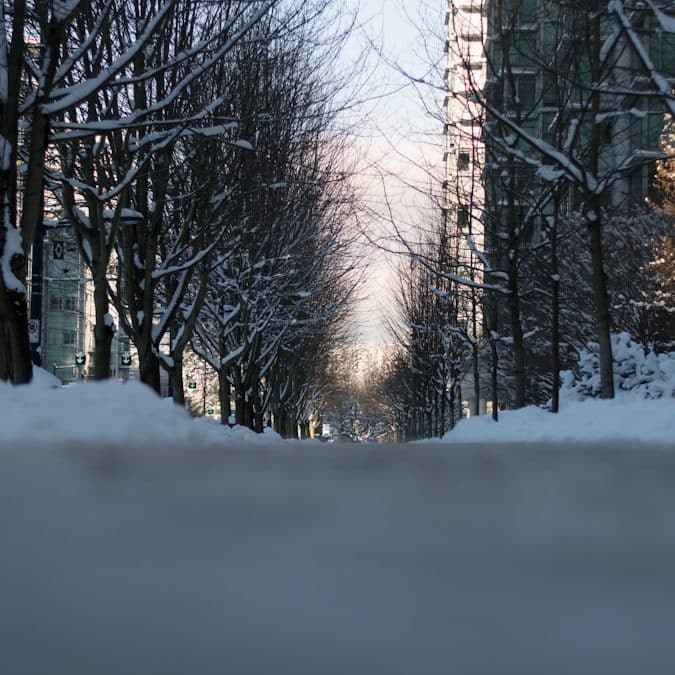The Implications of Icy Sidewalks
Certified Weather Experts Can Be Found Here.
Icy sidewalks pose significant hazards during winter months, leading to slip-and-fall accidents and raising questions about legal responsibility. Determining liability in these cases depends on various factors, including local laws, property ownership, and maintenance obligations. This blog explores the legal implications of icy sidewalks, offering insights into the responsibilities of property owners, municipalities, and individuals.
The Scope of the Problem
Slip-and-Fall Statistics
Every year, thousands of people suffer injuries due to icy sidewalks. According to the National Safety Council, slip-and-fall accidents are a leading cause of emergency room visits during winter months. These incidents result in broken bones, concussions, and, in severe cases, long-term disability or death.
Economic and Social Impacts
In addition to physical injuries, icy sidewalks carry economic consequences. Victims may face high medical bills, lost wages, and reduced quality of life, while property owners risk legal claims, fines, and reputational damage.
Legal Framework Governing Sidewalk Maintenance
Premises Liability Laws
Premises liability laws establish the duty of care property owners owe to others. In many jurisdictions, property owners are responsible for maintaining safe conditions, including clearing ice and snow from sidewalks. Neglecting this duty can result in legal action if someone is injured.
Municipal Ordinances
Cities and towns often have ordinances mandating timely snow and ice removal. These laws typically specify when sidewalks must be cleared, such as 24 hours after a snowfall. Failure to comply can lead to fines and heightened liability in injury claims.
State-Specific Snow Removal Laws
Laws governing snow and ice removal vary by state. For instance:
- New York: Property owners in New York City must clear sidewalks within four hours of a snowfall ending during the day or by 11:00 a.m. if it snows overnight.
- Illinois: While not universally mandated, some municipalities, like Chicago, require residents to clear snow to a width of at least five feet on public walkways.
Understanding state and local requirements is crucial for property owners and tenants alike.
Determining Liability in Slip-and-Fall Cases
Property Owners
In most cases, property owners bear the primary responsibility for sidewalk maintenance. This applies to both residential and commercial properties. If a property owner fails to remove ice or snow within the legally required timeframe and someone is injured, they may be held liable.
Tenants
In rental properties, tenants may share responsibility for sidewalk maintenance if their lease agreement includes such clauses. Courts often examine the terms of the lease to determine who bears liability.
Municipalities
Municipalities are typically responsible for public sidewalks, but immunity laws often protect them from liability unless gross negligence can be proven. However, cities can face lawsuits if they fail to address hazardous conditions reported by residents.
Third-Party Contractors
Property owners sometimes hire snow removal contractors to manage icy sidewalks. If these contractors perform their duties negligently, they may share liability for injuries.
Key Legal Concepts in Slip-and-Fall Cases
Duty of Care
Duty of care refers to the legal obligation to prevent harm reasonably. Property owners must take reasonable steps to clear sidewalks of ice and snow.
Negligence
Negligence occurs when someone fails to meet their duty of care. In slip-and-fall cases, plaintiffs must prove that the defendant’s negligence caused their injury.
Comparative Fault
Some jurisdictions apply comparative fault principles, reducing the plaintiff’s compensation if they are partially responsible for their injury. For example, if someone was running on an icy sidewalk, their negligence might reduce their claim.
Steps to Minimize Legal Risks
Proactive Maintenance
Property owners can reduce liability by implementing proactive snow removal policies. This includes clearing sidewalks promptly, spreading salt or sand, and ensuring proper drainage to prevent ice formation.
Documentation
Keeping records of maintenance activities is critical. Documenting when sidewalks were cleared or treated can provide evidence in the event of a lawsuit.
Signage and Warnings
If immediate clearing is impossible, placing signs or barriers to warn pedestrians can help mitigate risks.
Real-Life Case Studies
Case 1: Residential Property Owner Held Liable
In a 2019 case, a homeowner in Massachusetts was found liable after a neighbor slipped on an icy sidewalk. The court ruled that the homeowner failed to meet the standard of care by neglecting snow removal for two days after the snowfall.
Case 2: Tenant Responsibility
In Illinois, a tenant was held partially liable for a slip-and-fall injury because their lease agreement specified snow removal duties. The court emphasized the importance of clear contractual obligations.
Case 3: Municipality Found Negligent
In a rare case, a city in Michigan was found liable after failing to address hazardous conditions on a public sidewalk despite multiple complaints. The court ruled that the city’s negligence contributed directly to the injury.
FAQs About Icy Sidewalk Liability
1. What should I do if I slip on an icy sidewalk?
Seek medical attention immediately, document the scene, and consult a personal injury attorney to explore your legal options.
2. Can I sue my landlord for an icy sidewalk injury?
If your landlord is responsible for sidewalk maintenance under the lease agreement, you may have grounds for a lawsuit.
3. How can property owners protect themselves from lawsuits?
Regular maintenance, clear documentation, and hiring professional snow removal services effectively minimize liability.
The Role of Insurance
Homeowner’s Insurance
Homeowners’ insurance policies often cover slip-and-fall claims, but coverage limits and exclusions vary. Property owners should review their policies to ensure adequate protection.
Commercial Liability Insurance
Businesses must maintain commercial liability insurance to cover potential claims. Policies often include provisions for snow and ice-related incidents.
Emerging Legal Trends
Climate Change and Liability
As winters become more unpredictable due to climate change, legal expectations for snow and ice removal may evolve. Courts could impose stricter standards for property owners to adapt to changing conditions.
Technology in Snow Removal
Innovative snow removal technologies, such as heated sidewalks and automated plows, are becoming more common. These advancements could reduce property owners’ liability risks.

